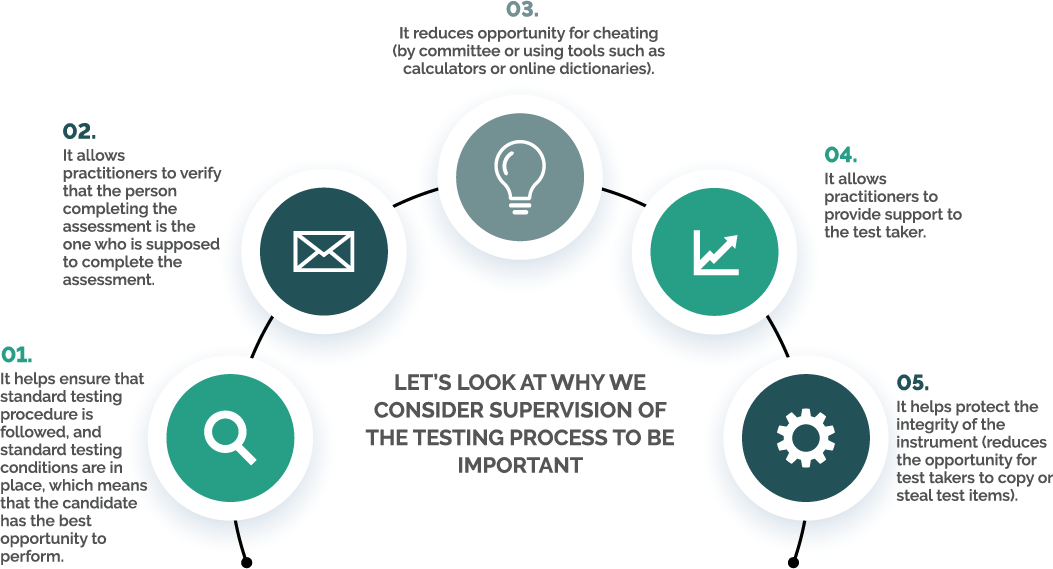


(Joint Task Force on the Development of Telepsychology Guidelines for Psychologists, 2013, p. 792)
This practice has been growing in popularity over the last few years and the recent Covid-19 pandemic has boosted the number of psychology professionals having to offer virtual services out of pure necessity. The practice of telepsychology has also raised questions around how to administer assessments virtually and what is acceptable practice. There has been a move to create both practice guidelines (Evans, 2018) and ethical guidelines to support the practice of telepsychology in South Africa (Chipise, et al., 2019), but there is very little guidance around the use of psychological tests. There is thus a clear need for guidance with regards to assessment supervision in the context of telepsychology.
This article aims to address three aspects of assessment supervision, namely:
In the following sections, we use the terms virtual proctoring and remote supervision interchangeably, to indicate the process of administration and completion of assessments under the supervision of a professional using video technology.
WHY SUPERVISION IS NECESSARY
While online assessments have been around for many years, the Covid-19 pandemic has forced us to re-examine the practice of assessment supervision and how it should be done in a world where social distancing, health risks, and isolation have become the new reality. The types of assessments that typically require some sort of supervision or face-to-face administration are cognitive assessments, those assessments used in high-stakes testing, assessments where the risk of cheating is high, and assessments that require behavioural observation.
Typically, these assessments are administered in person, although technologies do exist for the virtual or remote administration and supervision of tests. Many practitioners are in the position to offer virtual administration and proctoring of assessments through video channels such as MS Teams, Zoom, Skype, WhatsApp, or Hangouts (to name a few). While in many cases, this type of supervision would be a suitable alternative to in-person proctoring, there are some cases where it may not be.

There are certain situations that demand the use of in-person supervision over virtual proctoring to ensure that the above-mentioned points are in place. If the conditions below are present, we recommend that the administration and supervision of the assessment are done in person.
When it is appropriate for remote supervision to be done, we have compiled some basic guidelines for practitioners to use based on our experience and the best practice recommendations provided by the American Psychological Association, British Psychological Society, International Test Commission, and Australian Psychological Society.
APA Committee on Psychological Tests and Assessment. (2017, August). FAQ: Maintaining test security in the age of technology. https://www.apa.org/science/programs/testing/test-security-faq
British Psychological Society. (2020). Guidelines: Psychological assessment undertaken remotely. https://www.bps.org.uk/sites/www.bps.org.uk/files/Policy/Policy%20-%20Files/Psychological%20assessment%20undertaken%20remotely.pdf
Chipise, E., Wassenaar, D., & Wilkinson, A. (2019). Towards new ethics guidelines: the ethics of online therapy in South Africa. South African Journal of Psychology, 49(3) 337 –352. https://journals.sagepub.com/doi/10.1177/0081246318811562